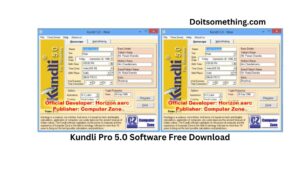How to Write an Abstract | Steps & Examples

Abstract
What is Abstract?
Do you know What is Abstract?, if yes then this article is for you. We are discussing What is Abstract? Read on for more.
The abstract is the short summary of your work that appears at the top of your paper. It is a powerful tool that describes the focus of your research, so that people who are considering
reading your full paper can quickly decide whether it fits their needs or piques their interest. It also helps them understand what you have accomplished in your research project and how your results apply to the wider field.

The purpose of your research (identifying what problem you are trying to solve, if applicable). The methods you used, including any data collection or analysis. The main findings and implications of your research. The key words in your abstract should match those used throughout the full work to help readers find it with online article databases that allow users to search by keyword.
Some academic disciplines use specific formats for their abstracts. Check with your professor or with the instructions from your journal to be sure you are using the appropriate format.
It is important to remember that your abstract will be read by a wide variety of people, from other experts in your field to general readers. Keep this audience in mind as you write, avoiding overly technical terms or explaining unfamiliar concepts. For example, if you are writing about DNA double-stranded breaks, it is unlikely that many of your readers will know what this is.
Abstract
1: Abstract as a Noun:
- In art: An abstract refers to a style of artwork that does not attempt to represent an accurate depiction of visual reality. Instead, it emphasizes shapes, colors, forms, and gestural or expressive elements.
- In academia: An abstract is a concise summary or overview of a research paper, article, or presentation. It typically highlights the main points, objectives, method, and findings of the work.
- Existing in thought or as an idea but not having a concrete or physical existence. For example, abstract concepts like love, justice, or time.
- Difficult to understand; theoretical rather than practical. For instance, abstract reasoning involves thinking about concepts and principles rather than specific instances.
3 : Abstract as a Verb:
- To extract or remove something from a source, to separate or disengage. For example, “abstracting key information from a text.”
- To summarize or condense information, to give an abstract of something.
It’s important to note that the term “abstract” can have slightly different meanings across various disciplines and contexts.
Abstract example
Here are a few examples of abstracts in different contexts:
Research Paper:
“Title: The Impact of Climate Change on Biodiversity in Tropical Rainforests: This study investigates the effects of climate change on biodiversity in tropical rainforests. We conducted field surveys in three rainforest regions and analyzed species composition, enough, and distribution patterns. Our findings suggest a significant decline in species richness and population sizes, particularly among endemic species. These changes have profound implications for ecosystem functioning and conservation efforts in the face of ongoing climate change.”
Artwork Abstract:
“Title: Abstract Harmony
Artist: Sarah Thompson
Medium: Acrylic on Canvas
- Description: Abstract Harmony is a vibrant and expressive artwork that explores the interplay of color, shape, and texture. The artist employs bold brushstrokes and a dynamic composition to evoke a sense of energy and movement. While the piece does not represent any recognizable objects, it invites viewers to engage with the harmonious arrangement of forms and the emotional response they elicit.”
Conceptual Abstract:
“Title: The Notion of Freedom in Political Philosophy
- Abstract: This essay examines the concept of freedom in political philosophy. It explores different theoretical perspectives on freedom, including negative liberty and positive liberty. The analysis considers the relationship between individual freedom and societal constraints, and the role of political institutions in safeguarding or limiting freedom. By critically evaluating various arguments and theories, this paper aims to deepen our understanding of freedom as a fundamental value in democratic societies.”
These examples illustrate how abstracts serve as concise summaries or representations of a larger work, whether it’s a research paper, artwork, or philosophical essay.
When to write an abstract
An abstract is typically written for various types of academic and professional documents. Here are some common situations in which you may need to write an:
- Research Papers: Abstracts are an essential component of research papers. They provide a concise summary of the paper’s main objectives, method, findings, and conclusions. Research paper abstracts help readers quickly determine the relevance and significance of the study.
- Conference Papers: When submitting a paper for a conference presentation, you may be required to include an. Conference abstracts serve a similar purpose as research paper abstracts, giving an overview of the paper to help conference organizers and attendees understand its content.

- Journal Articles: Many academic journals need authors to provide an abstract alongside their articles. Journal article abstracts are often published separately and serve as brief summary to attract readers’ attention and help them decide if they want to read the full article.
- Thesis or Dissertation: When completing a master’s thesis or doctoral dissertation, it’s common to include an abstract at the beginning of the document. The summarizes the research objectives, method, and key findings of the study, providing a snapshot of the entire work.
- Grant Proposals: When applying for research funding, grant proposals often need an abstract. The abstract provides a concise overview of the proposed project, including its objectives, significance, method, and expected outcomes.
It’s important to note that the specific guidelines for abstracts may vary depending on the discipline and the requirements of the target publication or event. Always check the guidelines or consult with your instructor or supervisor to ensure that you follow the appropriate format and length for the abstract.
Tips for writing an abstract
Certainly! Here are some tips for writing an effective abstract:
- Understand the Purpose: Familiarize yourself with the specific requirements and purpose of the abstract. Determine what information needs to be included and the desired length. Is the meant to summarize the main points, highlight the significance of the work, or provide a concise overview of the study?

- Be Concise and Clear: are meant to be brief, so focus on clarity and brevity. Use clear and concise language to convey your main points. Avoid unnecessary jargon or technical terms that may be difficult for readers outside your field to understand.
- Summarize Key Information: Identify the most important aspects of your work and focus on summarizing those. Highlight the main objectives, methodologies used, key findings, and significant conclusions. Make sure to include relevant data or evidence to support your claims.
- Avoid Excessive Detail: While you want to provide enough information, avoid getting into excessive detail in the abstract. Save the intricate specifics and supporting evidence for the main body of your paper or presentation.
- Check the Length: Adhere to the specified word or character limit for the. If there are no specific guidelines, aim for a concise of around 150 to 250 words.
- Proofread and Revise: After writing the, proofread it carefully to check for any grammatical errors, typos, or unclear statements. Revise as needed to ensure that your is clear, coherent, and effectively communicates the main points of your work.
- Seek Feedback: Consider having someone else review your abstract before finalizing it. Fresh eyes can provide valuable feedback and help you identify any areas that need improvement or clarification.
Read More Article Windows 11 cheat sheet: Everything you need to know
FAQ – What is Abstract?
The practices vary significantly by field, but unless it is a very unusual case, having your abstract accepted means that you will be presented in some form or another. It is not certain, however, whether you will be making an oral presentation
The presenting author submits the abstract because they wish to present their work at the conference. The conference then has a committee that decides and selects the abstracts that most fit the topic and purpose of the conference. These chosen abstracts are then scheduled into the conference.
The results section is the most important part of the abstract and nothing should compromise its range and quality. This is because readers who peruse an abstract do so to learn about the findings of the study.
Conclusion
The abstract, which can be included at the beginning of your manuscript, is a succinct description of your work.
It is an effective instrument that clarifies the subject of your research so that those who are thinking about
Additionally, it aids in their comprehension of your research project’s accomplishments and the relevance of your findings to a broader field.
We hope that this article has helped you to know Abstract, if you have any questions then let us know in the comment section.







